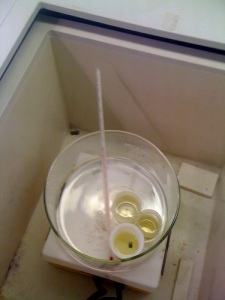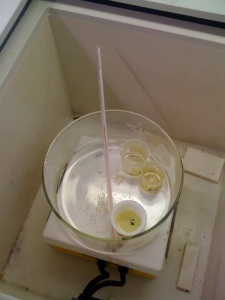Modern life is linked inextricably to Science and Technology. Those two words, although very different in origin and meaning are so intertwined today that their history makes interesting reading. The Merriam Webster online dictionary defines Technology as the practical application of knowledge and Science as a system of knowledge covering general truths or laws that is capable of making falsifiable predictions. This definition suggests that Science creates knowledge which then propagates into Technology that is used to enrich our lives. But the relationship between the two is not always so clearly unidirectional.
2009 was celebrated worldwide as the International year of Astronomy because it was the 400th anniversary of the great Italian physicist Galileo Galilei setting about building his “spyglass” which he soon improved to discover the satellites of Jupiter, sun-spots and the phases of Venus. Galileo did all this without a scientific understanding of the propagation of light which had to wait for Isaac Newton. Instead, the technology of the telescope advanced by continued experimentation, enough for Galileo and others to gather sufficient empirical evidence for a then fledgling theory, that the earth is not the centre of the universe.
Against popular belief of the time, Nikolaus Copernicus in the 16th century had proposed that it is the earth that revolves around the sun and not vice-versa. However, it wasn’t until the preponderance of astronomical evidence gathered by telescopic observations a century later that Copernicus could be proved right. The technology of the telescope completed the most important step in the elevation of Copernicus’ proposal to the level of scientific theory. An overwhelming amount of data was gathered, all of which supported Copernicus’ idea over the model placing the earth at the center of the universe, thus convincing all rational sceptics of its merits. In this case, the advance of technology allowed us to see farther and deeper into nature’s mysteries, thus revealing scientific facts.
On the other hand, modern day technologies are inextricably linked to scientific advances. Quantum theory led to our understanding of semiconductor electronics without which the computer industry wouldn’t have taken off. General relativity allowed us to understand gravity well enough to build spacecrafts that put a human being on the moon. Enhanced understanding of the human body and the germ theory of disease led to the design of cures to many infectious diseases. Science and technology, it seems, are advancing together feeding off the achievements in each other, like a system with positive feedbacks. Improved technology allows us to probe further into phenomena that perplex us and lead to scientific theories that help design still better technologies that add value to life. But this relationship between science and technology was not always so close.
Technological advances have been a hallmark of human civilisation throughout history. Our ancestors controlled fire, learned agriculture, invented the wheel and used natural medicines, all by empirical studies that established their utility without any real understanding of the underlying principles. Despite this challenge, technology made tremendous advances, the importance of which is underscored by the fact that historians use technological strides to define particular ages of human history.
Modern Science also had a precursor in history. All ancient civilisations developed natural philosophy to explain the mysteries that surrounded them. While technologies added comfort to life, philosophical inquiry addressed the relentless questions of the mind. But these endeavours did not mesh effectively together to feed off the advances of each other like modern science and technology do. For instance, some schools of Indian philosophy postulated the atomic theory of matter long before it became a scientific theory based on empirical evidence. But the former cannot be called science because it was not based on experiments. The ancient Chinese on the other hand, made practical use of the observation that magnets always tend to align along the same direction, but they did not attempt to explain it using fundamental principles like we do now.
It was only post-renaissance that modern science, as defined by the scientific method, was born. Natural philosophy began to be buttressed by structured falsifiable experiments. Technologies increasingly made use of scientific advances and contributed to them too. This process of co-mingled development has led today to a situation where we cannot imagine excelling in the pursuit of either without also excelling in the other. But what are the consequences of this blurring of differences?
It is easy to see a causal relationship between technology and tangible benefits to society. In a capitalist economy, technological advances can be easily commercialised and the inventors rewarded handsomely. So there is tremendous societal interest in incubating and facilitating technological endeavours. But, science, on the contrary, is more of a personal pursuit. Although it leads to technologies, its major purpose is to satisfy our innate curiosity and thirst for knowledge. While this is as, if not more, important than material progress, it is difficult to make the case for a result-oriented society to support science for its own sake, purely for the joy of exploration.
Hence, scientists in modern times have tended to use the interlinkages between science and technology and how advances in the former translate into technological marvels in attempts to win more societal support for science. While there is nothing wrong with the reasoning and it has been successful in increasing science funding, the question has to be asked if this is the right approach in the long run. By restricting the utility of science to the narrow channel of technological progress, we risk de-legitimising, in the eyes of society at large, the science that searches for answers to our basic questions.
Space exploration provides one of the best examples for this malaise. Although human beings have always yearned to unlock the mysteries beyond our earth and to go beyond the frontiers of generations past, we have now got used to justifying space missions for their perceived military or medical value. This has affected policy to such a great extent that we choose space stations that add little to our understanding or sense of our place in the universe against grander missions into outer space.
When the pursuit of science is justified in terms of technological dividends, it advances the cause of neither science nor technology. The greatest contributions to technological progress have come from science that is done for its own sake. Taking the long view to appreciate the historical differences between the two and the different purposes they serve in enriching human life can help us put today’s connections between them in perspective. The pursuit of technology and material progress is a choice. But scientific temper and understanding provide succour to the soul and is a necessity. We should be vigilant not to make support for the latter contingent on our desire for the former.





Recent Comments